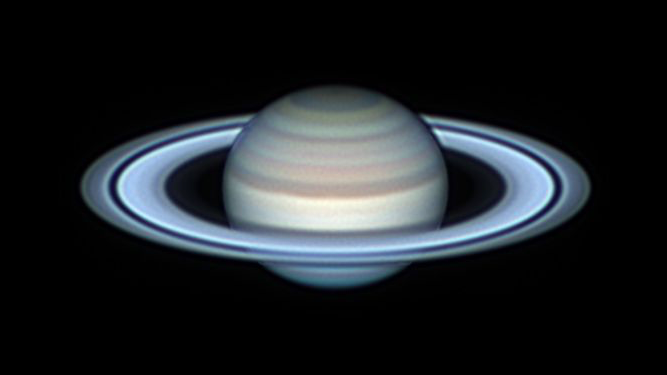
Saturn’s rings are beautiful
Saturn is the most gasp-inducing planet when viewed through a telescope. And it’s currently providing its best views of 2022 as it reaches its August 14 opposition. Saturn looks starlike to the eye alone. It appears as a golden-hued dot and shines steadily, as planets tend to do. Binoculars will enhance its color, and even a small telescope will let you glimpse Saturn’s rings. Veteran observer Alan MacRobert at SkyandTelescope.com has written:
The rings of Saturn should be visible in even the smallest telescope at 25x [magnified by 25 times]. A good 3-inch scope at 50x [magnified by 50 times] can show them as a separate structure detached on all sides from the ball of the planet.
Want to see Saturn’s rings? First, you need to find Saturn in the sky. It’s not hard! It’s currently in the southeastern sky not far from the horizon after sunset.
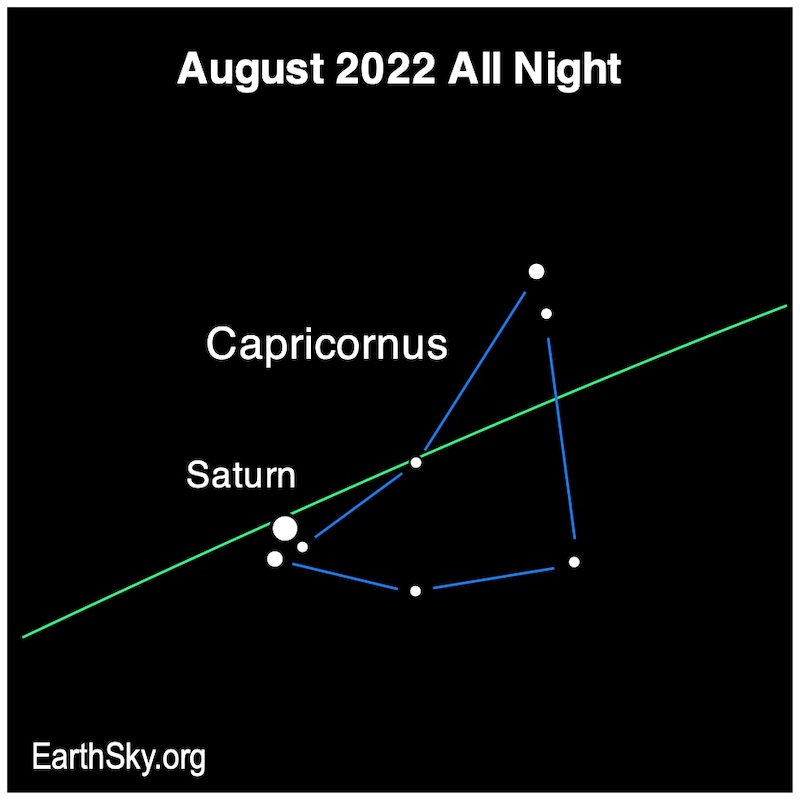
Attending a star party or astronomy club
Okay, got Saturn? Now … about that telescope. One possibility is to start scouting out a star party near you, where amateur astronomers are set up to show you telescopic objects. Check the club map at NASA’s Night Sky Network to find star parties. Or try this list of astronomy clubs by state from the Astronomical League. You can also call a local university or science museum and ask about star parties. Or maybe a neighbor, or friend, has a telescope stashed in a closet? More possibilities:
Astronomy Clubs Near Me & Organizations, from SkyandTelescope.com.
2022 Astronomy Club Directory, from Go-Astronomy.com.
Astronomy Clubs Near Me, from LoveTheNightSky.com.
Once you can find Saturn in the sky and have a star party to attend, consider the following tips before your ring-viewing session.
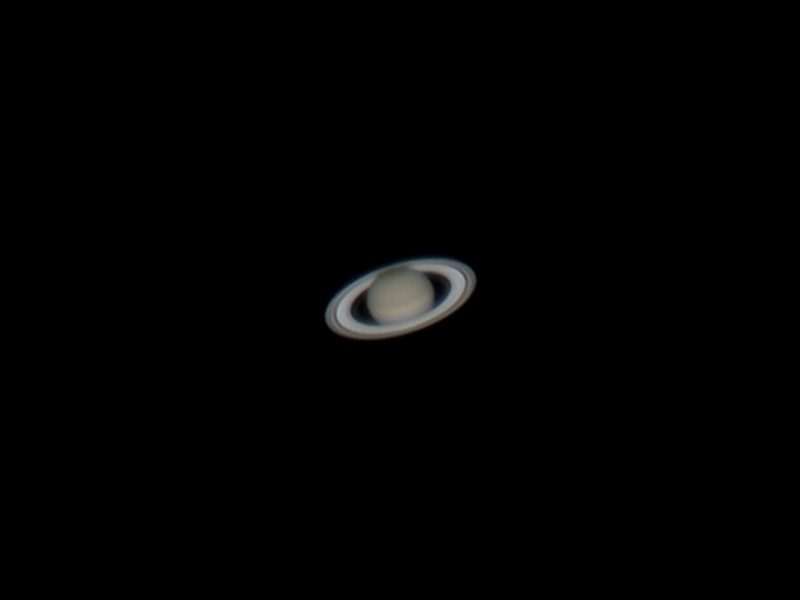
Tip 1: You need a telescope to see Saturn’s rings
Don’t expect to see the rings in binoculars. You really do need a telescope. A bigger telescope will show you more than a smaller telescope. Check out the contrast between the two photos below.
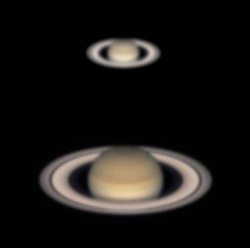
Tip2: Consider the tilt of Saturn’s rings
Notice the tilt of the rings. As with so much in space (and on Earth), the appearance of Saturn’s rings from Earth is cyclical. In 2017, the north side of the rings opened up most widely (27 degrees), as seen from Earth. That’s the most open this side of the rings has been since 1988.
In 2022, the angle is down to 14 degrees but still very easy to see the expanse of the rings as we look at the planet’s northern hemisphere. By 2025, the rings will appear edge-on as seen from Earth. Because the rings are so thin, Saturn may look as if it has no rings at all! After that, we’ll begin to see the south side of Saturn’s rings, which will gradually increase to a maximum inclination of 27 degrees by May 2032.
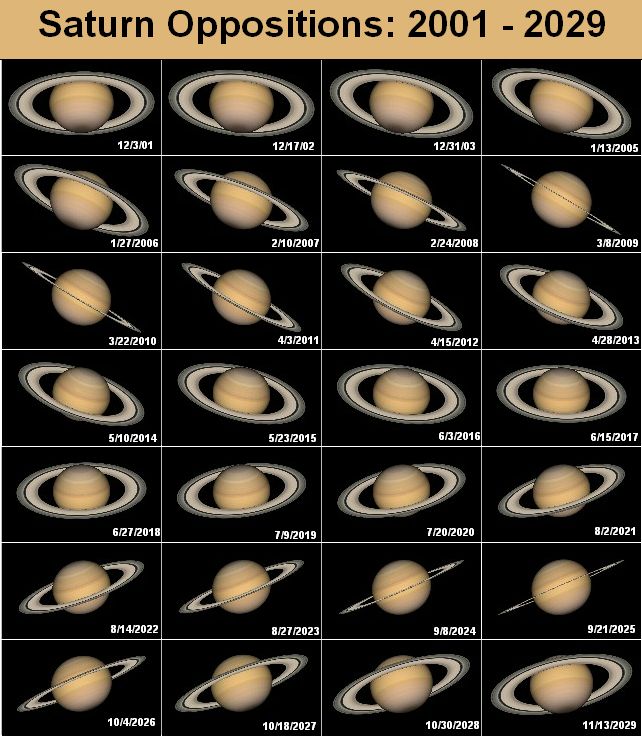
Tip 3: Can you see the rings in 3D?
Ask yourself … do Saturn’s rings look three-dimensional? Again quoting Alan MacRobert at SkyandTelescope.com:
Saturn has a more three-dimensional appearance than any other object in the sky; at least that’s how it looks to me with a 6-inch ‘scope on a night of fine seeing.
Shadows cast by the ring on the planet in front and by the planet on the farther ring can make the image of Saturn pop.
Tip 4: How’s the seeing?
What was Alan talking about in that quote above when he mentioned seeing? Both amateur and professional astronomers talk about the night’s seeing, which affects how clearly and sharply you can see a telescopic image. Seeing isn’t a quality of the telescope; it’s a quality of the air above you. It’s the reason the stars twinkle more on some nights than others.
When the air is particularly turbulent, astronomers say there’s bad seeing. The images in the telescope shimmy and dance. When the air is particularly still, astronomers say there’s good seeing. Seeing can shift from moment to moment as parcels of air move above you. So, as you’re gazing at Saturn, stand as quietly as you can – for as long as you can – and just look. You’ll notice moments when the image suddenly comes into sharper focus.

Other tips to consider
Once you get comfortable viewing Saturn – assuming you’re able to view it again and again, with a telescope of your own – you’ll begin to notice details in the rings.
Today, thanks to spacecraft, we know that Saturn’s rings are incredibly detailed. But, as you stand at your telescope gazing upward, you might be thrilled to witness just one primary division in the rings, the Cassini Division between the A and B rings, named for its French discoverer Jean Cassini.
Seeing this dark division is a good test of the night’s seeing and your telescope’s optical quality, and also of your own eyes’ ability to simply look and notice what you see. By the way, if you’re looking at the rings – which means you’re viewing Saturn through a telescope – also look for one or more of Saturn’s many moons, most notably Titan.
The Opposition Surge
A phenomenon that occurs when Saturn is at opposition is that the rings brighten for a few days. You can only see this a few nights on either side of opposition, which this year occurs on August 14.
This is the Seeliger Effect, which Hugo von Seeliger first described more than 100 years ago. Normally the rings appear as bright as the globe of the planet. But as the planet lines up with the earth and the sun, more sunlight suddenly gets reflected back to us from the rings than from the globe, and the rings take on an additional level of brightness.
The two mechanisms for this brightening are shadow hiding and a coherent reflection of sunlight off of the rings’ particles. Shadow hiding occurs because the shadows are the shortest on the ring particles. The coherent reflection of light occurs because light going straight into the ice particles reflects off of the inner surfaces, then straight back to where it came from.
This brightness surge lasts only a few days; see a study showing this increase. The window for this opportunity is August 12 through August 16. The full moon will be just south of Saturn on August 11, so it should be easy to find.
Have fun!
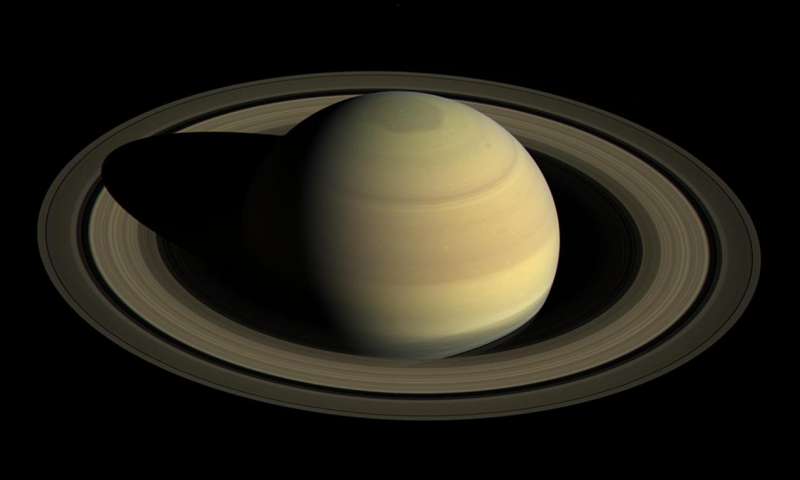
Bottom line: If you want to see Saturn’s rings, August 2022 is a great time to look. Grab a telescope and read the tips found here!
Help EarthSky keep going! Please donate.
The post Saturn’s rings: Top tips for seeing first appeared on EarthSky.
0 Commentaires